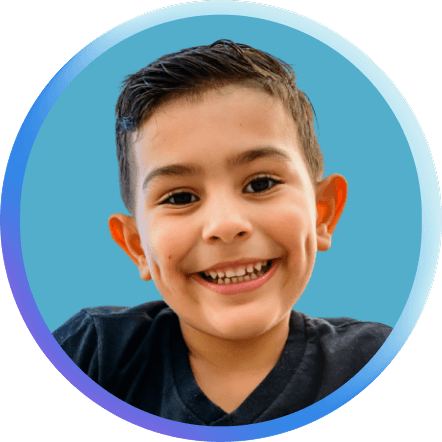Myopia Management
Pediatric Myopia (Nearsightedness) Specialist in Illinois & Iowa
Slowing Nearsightedness in Children Through Early Intervention
Childhood nearsightedness, or myopia, is becoming increasingly common. When not properly managed, this condition can progress quickly, raising the risk for long-term eye health concerns such as retinal detachment, cataracts, glaucoma, and macular degeneration. Across the Quad Cities, parents are turning to Eye Surgeons Associates for early detection and practical solutions to help protect their child’s future vision.

Myopia Management programs focus on slowing the growth of the eye and reducing how rapidly the child’s prescription changes over time. Two clinically proven treatments include low-dose atropine eye drops and specially designed contact lenses. When used consistently under a doctor’s guidance, both options have significantly slowed the progression of nearsightedness. The choice between them often depends on age, daily habits, and how comfortable a child is with contact lens use.
Here’s what this means for your child’s daily life and independence:
If We Can Keep Your Child’s Vision From Getting Too Bad – Moderate Myopia (-2 to -3 prescription):
- What they can see: Your child can see clearly about 12-16 inches away without glasses
- Real life: They can read their phone, see their alarm clock, navigate around the house safely, and recognize faces across a room
- Independence: Your child can handle daily activities and emergencies even if glasses break or are lost—they’re not helpless without them
If Their Vision Gets Really Bad – High Myopia (-6 to -8+ prescription without treatment):
- What they can see: Your child can only see clearly about 6-8 inches away without glasses
- Real life: They’d need to hold their phone almost touching their nose, couldn’t see their alarm clock from bed, and faces become blurry just a few feet away
- Dependence: Your child becomes completely dependent on glasses or contacts—losing them creates genuine hardship and they can’t function safely without them
The bottom line: By slowing how fast your child’s vision gets worse with treatment, we’re not just preventing thicker glasses—we’re preserving their independence and quality of life. There’s a huge difference between a child who can confidently handle life’s unexpected moments and one who feels helpless without their glasses.
Think about it this way: With mild vision problems, broken glasses are annoying. With severe vision problems, broken glasses are a crisis.
Who Benefits:
- Children ages 5-15
- Frequent prescription changes for distance vision
- Family history of nearsightedness
Why It Matters:
While glasses help your child see clearly, they don’t stop the underlying problem. Without treatment:
- Vision continues to worsen each year
- 15% of nearsighted children become highly nearsighted
- Higher risk of serious eye diseases later in life (glaucoma, retinal detachment)
Myopia Control Contact Lenses for Kids in the Quad Cities
For older children comfortable with lenses, options like FDA approved MiSight® daily disposable contact lenses provide both clear daytime vision and therapeutic benefits. These specialty contact lenses include a dual-focus design to help slow down the elongation of the eye, helping to manage myopia progression while offering freedom from glasses during the day.
Atropine Eye Drops for Nearsighted Children
Low-dose atropine is an excellent alternative for younger children or those not ready for contact lenses. Applied once before bedtime, these drops work by slowing the eye’s focusing response and reducing the rate of eye growth. The drops are safe and effective for long-term use under supervision from a pediatric eye care provider.
Lifestyle Changes to Support Myopia Management
Incorporating outdoor time and managing screen exposure are essential strategies for children with myopia. Studies show that children who spend more time outside tend to have slower progression of nearsightedness. Reducing near work, encouraging breaks during reading or digital learning, and promoting overall visual hygiene can reinforce the success of medical treatments.
What to Expect During a Pediatric Eye Exam
A comprehensive pediatric eye exam thoroughly assesses refractive error, eye alignment, and growth patterns. Diagnostic tools may be used to measure eye length and track changes over time. These exams are essential for diagnosing myopia early and creating a treatment plan before progression accelerates.
Why Early Myopia Treatment Matters
Controlling nearsightedness early significantly reduces the chance of developing high myopia and related eye complications later in life. Long-term eye health depends on managing both prescription changes and the structural health of the eye itself. Early treatment is a proactive step toward preserving vision into adulthood.
